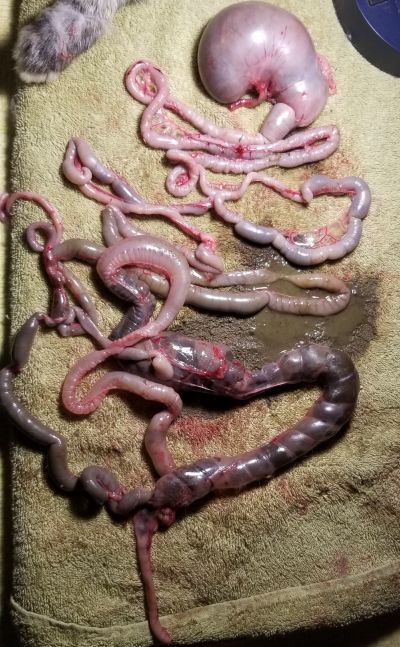Anatomy
Anatomy of the Rabbit
This section covers the anatomy of the rabbit, highlighting each body system and references for normal presenting organs.
Integumentary System
The integumentary system is the body's outer layer, consisting of skin, hair, nails, and glands. These structures act as the first line of defense against bacteria and help protect against injury and sunlight. The integumentary system works with other systems to maintain body balance.
Skeletal System
The skeletal system provides structural support, protects internal organs, and allows for movement in conjunction with muscles.
Muscular System
The muscular system enables locomotion, maintains posture, and supports other bodily functions.
Lymphatic System
The lymphatic system helps maintain fluid balance, absorbs fats from the digestive system, and provides immune defense against pathogens.
Respiratory System
The respiratory system is responsible for gas exchange, delivering oxygen to the bloodstream, and removing carbon dioxide. Normal rabbit lungs should be bright bubble-gum pink and feel light and fluffy, like marshmallows, when palpated.
Digestive System
The digestive system processes ingested food, absorbs nutrients, and eliminates waste. Rabbits are hindgut fermenters, relying on a large cecum for fiber digestion.
Morphometric Study in Stomach of Rabbits
- José Alves, 2014, *International Journal of Morphology*
- Publisher: SciELO, Comisión Nacional de Investigación Científica y Tecnológica (CONICYT)
- Morphometric Study in Stomach of Rabbits
Gross Anatomy and Histo-Architecture of Rabbit Stomach
- *Int. J. Adv. Res.* 6(1), 647–653
- DOI: 10.21474/IJAR01/6269
- Gross Anatomy and Histo-Architecture of Rabbit Stomach
Nervous System
The nervous system controls voluntary and involuntary actions, senses, and coordination. It includes the brain, spinal cord, and peripheral nerves.
Endocrine System
The endocrine system secretes hormones that regulate metabolism, growth, reproduction, and stress responses. Major glands include the pituitary, thyroid, adrenal, pancreas, and gonads.
Cardiovascular System
The cardiovascular system circulates blood, delivering oxygen and nutrients while removing waste. It consists of the heart, arteries, veins, and capillaries.
Urinary System
The urinary system maintains fluid and electrolyte balance and removes nitrogenous wastes via the kidneys, ureters, bladder, and urethra.
Reproductive Systems
The reproductive systems include male and female organs responsible for gamete production, fertilization, and reproduction.

